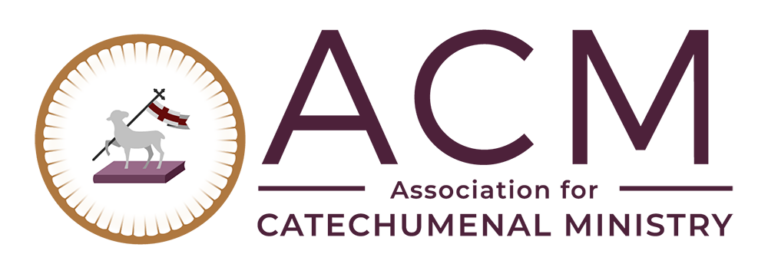In the catechumenate of the early Church, the early Church Fathers recounted the history of salvation (also known as “Salvation History“) to their audience (inquirers and catechumens) using the Bible and Church History.
We especially see this clearly in St. Augustine’s “First Catechetical Instruction” (In Latin: De Catechizandis Rudibus). St. Augustine wrote this famous work to a deacon of Carthage named Deogratias in AD 405 as advice on what to present to an inquirer. This story of Salvation History is referred to by Augustine as the narratio – the “narration“
Before we go on, let’s take a look at two quotations from the Church’s General Directory for Catechesis:
“In the patristic period properly, catechumenal formation was realized through Biblical catechesis, based on recounting the history of salvation” (#89)
“The historical character of the Christian message requires that catechesis attend to the following points … presentation of salvation history by means of Biblical catechesis so as to make known the ‘deeds and words’ with which God has revealed himself to man: the great stages of the Old Testament by which he prepared the journey of the Gospel; the life of Jesus, Son of God, born of the Virgin Mary who by his actions and teaching brought Revelation to completion; the history of the Church which transmits Revelation: this history, read within the perspective of faith, is a fundamental part of the context of catechesis” (#108)
In a nutshell, the catechist – in one RCIA session – tells the Story of God’s Family from before creation to the end of time. In other words, the catechist begins with the eternal life of the Blessed Trinity and finishes with the Final Coming of Jesus Christ.
The reason for doing this is to show the inquirers or catechumens the big picture all at once. It gives them a bird’s eye view of history, allowing them to see how the Old Testament led up to and was fulfilled in Jesus; how God has been redeeming humanity and making saints through his Church for nearly 2,000 years; and how Jesus will return again to judge the living and the dead. The recounting of the Story will open the eyes of your RCIA participants and allow for them to comprehend the Faith in a much more cohesive manner. This will help them to form a Catholic worldview.
“The Story of the People of God” is outlined on page 151 of the RCIA Catechist’s Manual and is spoken of on pages 383-387 of the RCIA Leader’s Manual.
Below are some sample points that a telling of the Story would entail:
- The eternal life of the Blessed Trinity – an eternal exchange of love
- The creation of the angels – some chose to rebel
- The creation of humanity out of love to share in God’s own Trinitarian life
- Our temptation by Satin and our fall from grace through Original Sin
- God’s promise of a redeemer and plan of salvation
- God’s gradual gathering of a people (Israel) through successive covenants
- A brief history of Israel
- The promises and prophecies of the prophets
- Mary’s “yes” to angel Gabriel
- The Incarnation – which should be given great emphasis!
- The life of Jesus Christ
- Jesus’ redemptive sacrifice on the cross and resurrection from the dead
- The giving of the Holy Spirit and the birth of the Catholic Church at Pentecost
- The Church as the Family and Kingdom of God – the Body of Christ
- A brief history of the Church – saints are in constant supply
- Today, we are living in the midst of this Story
- The sure promise and hope that Jesus will come again to judge the living and the dead
The Story / Narration / Salvation History should be told in an exciting and dynamic way as truth – not as a fictional story – focusing upon the main points, not going into great detail. In his First Catechetical Instruction, St. Augustine wrote, “we ought to present all the matter in a general and comprehensive summary, choosing certain of the more remarkable facts that are heard with greater pleasure and constitute the cardinal points in history” (#5).
Show how God invites every human person to redemption in Jesus Christ, to salvation, into membership within his Family, the Catholic Church.
Once the Story has been told and later on in the RCIA process during the catechumenate, particular truths of the Faith can be tied into the Story. When the 10 Commandments are presented, you can point back to the Exodus of Israel from Egypt and show how these commandments were given to Moses upon Mt. Sinai during that Exodus. You can show how certain things were prefigured through “types” in the Old Testament, such as Jesus, Mary, the Mass, the Sacraments, and the Church.
Related Blog Entry
Also, see the blog entry titled: “The Gospel Message in the Precatechumenate“






